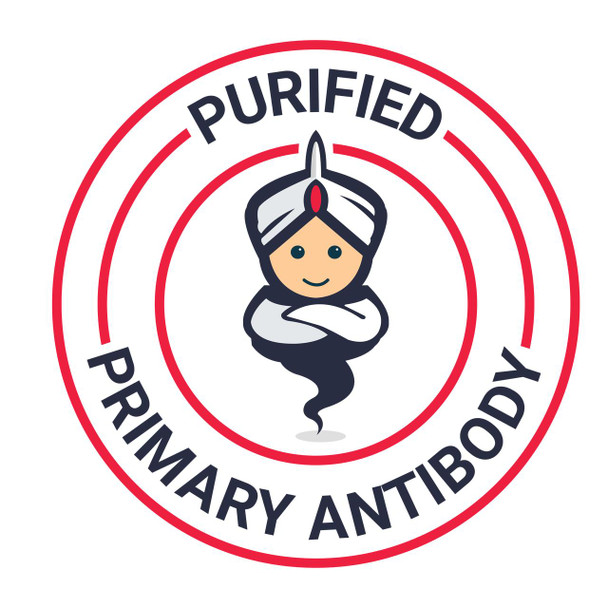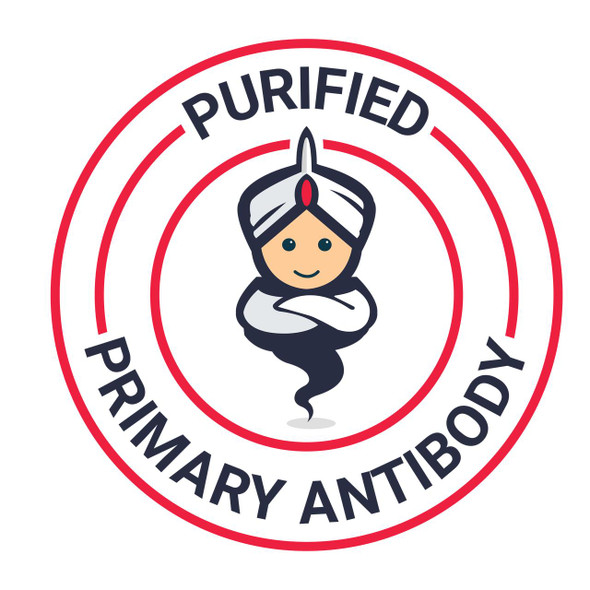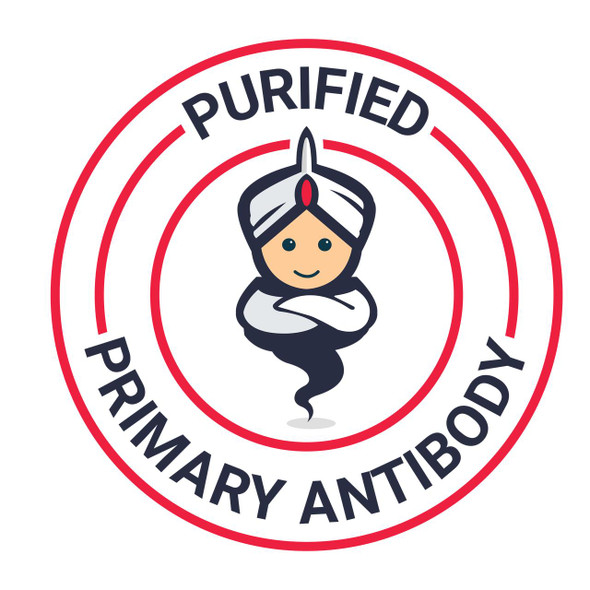Description
| Product Name: | CD3rCP monoclonal antibody (PerCP) |
| Product Code: | AGIM0385 |
| Size: | 100 µL |
| Reactivity: | Human |
| Clone: | UCHT-1 |
| Applications: | Flow Cytometry |
| Conjugate: | PerCP |
| Isotype: | IgG1k |
| Host Species: | Mouse |
| Storage: | Store at 4°C. Do not freeze. Avoid prolonged exposure to light. |
| Uniprot: | P07766 |
| Background: | CD3 complex is crucial in transducing antigen-recognition signals into the cytoplasm of T cells and in regulating the cell surface expression of the TCR complex. T cell activation through the antigen receptor (TCR) involves the cytoplasmic tails of the CD3 subunits CD3 gamma, CD3 delta, CD3 epsilon and CD3 zeta. These CD3 subunits are structurally related members of the immunoglobulins super family encoded by closely linked genes on human chromosome 11. The CD3 components have long cytoplasmic tails that associate with cytoplasmic signal transduction molecules. This association is mediated at least in part by a double tyrosinebased motif present in a single copy in the CD3 subunits. CD3 may play a role in TCR-induced growth arrest, cell survival and proliferation. The CD3 antigen is present on 68-82% of normal peripheral blood lymphocytes, 65-85% of thymocytes and Purkinje cells in the cerebellum. It is never expressed on B or NK cells. Decreased percentages of T lymphocytes may be observed in some autoimmune diseases. |
| UniProt Protein Function: | CD3E: a T cell surface glycoprotein that is a component of the T cell antigen receptor. The recruitment of Nck by CD3 epsilon reveals a ligand-induced conformational change essential for T cell receptor signaling and synapse formation. Contains 1 immunoglobulin-like domain and 1 ITAM domain. |
| UniProt Protein Details: | Protein type:Receptor, misc.; Membrane protein, integral Chromosomal Location of Human Ortholog: 11q23 Cellular Component: T cell receptor complex; integral to plasma membrane; plasma membrane; immunological synapse; alpha-beta T cell receptor complex; intercellular junction; external side of plasma membrane Molecular Function:protein binding; transmembrane receptor activity; receptor signaling complex scaffold activity; protein heterodimerization activity; receptor signaling protein activity; T cell receptor binding; SH3 domain binding; protein kinase binding Biological Process: regulation of immune response; T cell activation; positive regulation of interleukin-2 biosynthetic process; signal complex assembly; positive regulation of calcium-mediated signaling; negative thymic T cell selection; T cell receptor signaling pathway; positive regulation of interleukin-4 production; regulation of apoptosis; G-protein coupled receptor protein signaling pathway; positive regulation of interferon-gamma production; positive regulation of peptidyl-tyrosine phosphorylation; cell surface receptor linked signal transduction; negative regulation of smoothened signaling pathway; T cell costimulation; protein complex assembly; positive regulation of alpha-beta T cell proliferation; positive regulation of T cell proliferation; positive regulation of T cell anergy; transmembrane receptor protein tyrosine kinase signaling pathway; response to nutrient Disease: Immunodeficiency 18 |
| NCBI Summary: | The protein encoded by this gene is the CD3-epsilon polypeptide, which together with CD3-gamma, -delta and -zeta, and the T-cell receptor alpha/beta and gamma/delta heterodimers, forms the T-cell receptor-CD3 complex. This complex plays an important role in coupling antigen recognition to several intracellular signal-transduction pathways. The genes encoding the epsilon, gamma and delta polypeptides are located in the same cluster on chromosome 11. The epsilon polypeptide plays an essential role in T-cell development. Defects in this gene cause immunodeficiency. This gene has also been linked to a susceptibility to type I diabetes in women. [provided by RefSeq, Jul 2008] |
| UniProt Code: | P07766 |
| NCBI GenInfo Identifier: | 1345708 |
| NCBI Gene ID: | 916 |
| NCBI Accession: | P07766.2 |
| UniProt Related Accession: | P07766 |
| Molecular Weight: | |
| NCBI Full Name: | T-cell surface glycoprotein CD3 epsilon chain |
| NCBI Synonym Full Names: | CD3e molecule |
| NCBI Official Symbol: | CD3E |
| NCBI Official Synonym Symbols: | T3E; TCRE; IMD18 |
| NCBI Protein Information: | T-cell surface glycoprotein CD3 epsilon chain |
| UniProt Protein Name: | T-cell surface glycoprotein CD3 epsilon chain |
| UniProt Synonym Protein Names: | T-cell surface antigen T3/Leu-4 epsilon chain; CD_antigen: CD3e |
| UniProt Gene Name: | CD3E |
| UniProt Entry Name: | CD3E_HUMAN |








